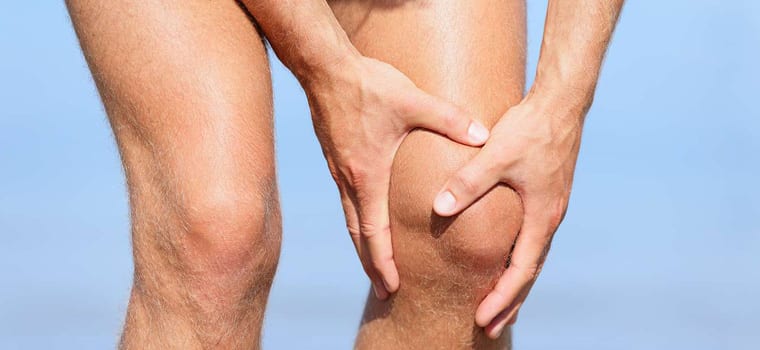According to the American College of Sports Medicine, or ACSM, a squat is an exercise that is typically completed with a barbell. You start in a standing position with the barbell at your back and bend your knees to squat until the thighs are parallel with the ground. The squat is often criticized due to safety concerns. While studies fail to produce evidence, knee injuries are often the result of improper squat form and over-training.
History
As indicated by the ACSM, studies conducted in the 1960s investigated claims of squats causing knee pain. Researchers believed squats were overstretching the ligaments surrounding the knee. However, research failed to produce evidence that squats were causing knee injuries. ACSM indicates the study was biased because the study was conducted on parachutists, who are typically in a squatting position as they land. However, their squatting position is the result of a high-impact landing. No recent studies have been conducted linking knee injuries to squats.
The Rubin Institute of Advanced Orthopedics at Sinai Hospital suggests congenital issues, prior injuries and diseases of the muscular skeletal system are likely causes of squat-related injuries. The Rubin Institute believes those with known and unknown conditions of the knee are susceptible to injuries related to squatting. For instance, those born with dysplasia have misaligned kneecaps, which can cause more frequent knee injuries. Those with chondromalacia (inflammation under the kneecaps) and arthritis are also more likely to experience pain during squats. Muscle tightness and inflammation caused by tendinitis also can cause inflammation during squats.
Proper Squats
Squats are completed by standing with your feet shoulder-width apart and your toes facing forward. Your back should remain straight, and all movement should come from your hips. Push your buttocks out and bend your knees as you squat. Avoid letting your knees move in front of your toes. Never squat lower than a 90-degree, right angle at your knees.
Solutions
To avoid knee injuries while squatting, the SportsInjuryClinic.net recommends starting with shallow squats. You can gradually increase your squatting stance until you reach a right angle. A postural assessment conducted by a fitness professional can also help to determine if you possess muscular imbalances, such as imbalances with the hamstrings and quads, which can cause your legs to hyper-extend during a squat. This is likely to result in pain or injury. A fitness professional can design an exercise plan aimed at eliminating muscle imbalances.









